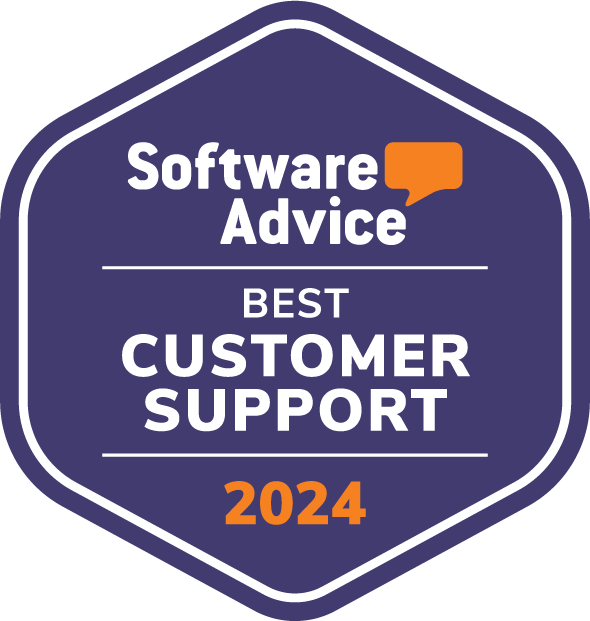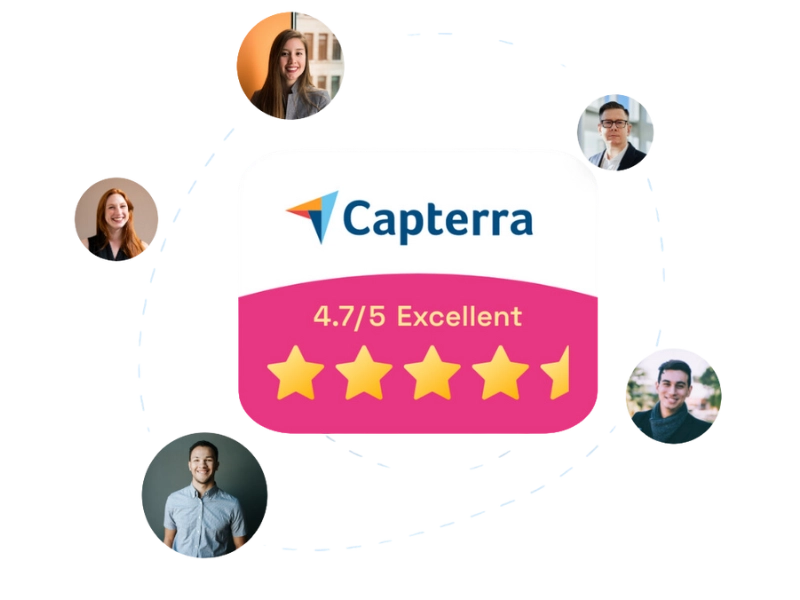Employee Onboarding Process: Our Checklist to Implement It
What is corporate onboarding? How useful is the intranet in this process? In this article, we will explore the different stages of the onboarding process to integrate a new person into the corporate community.
We will also delve into the tools to use to enhance the onboarding experience through greater engagement.
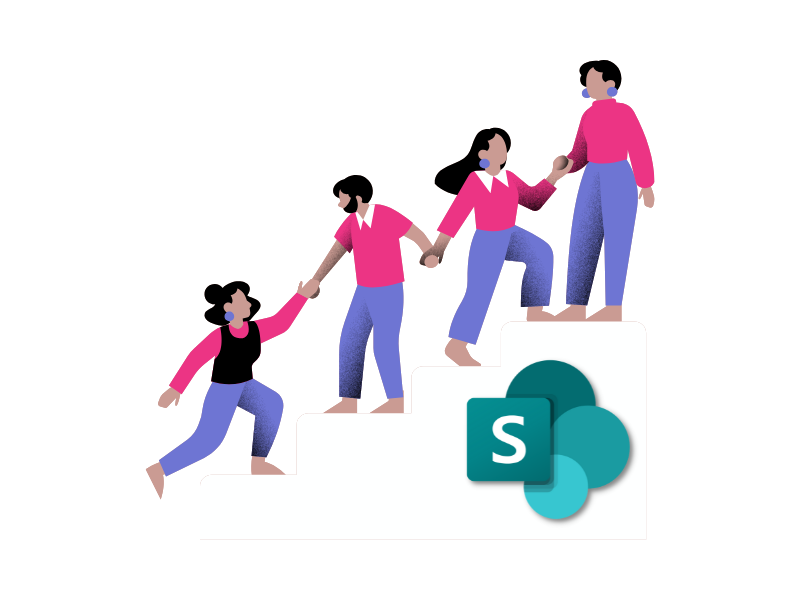
What you will find in this article
- What is corporate onboarding
- Corporate onboarding: methods and benefits of optimization
- The role of management in the onboarding process
- How onboarding procedures improve with the intranet
- 3 ways to digitize the onboarding process
- 8 examples to optimize the onboarding process
- Checklist for corporate onboarding: how to successfully manage the process
Corporate onboarding definition
Corporate onboarding is the process that follows the hiring of new employees and is closely linked to the attraction phase of candidates. For this reason, it is often managed by Human Resources, which is responsible for defining and monitoring the integration of a new colleague into the company to achieve two main objectives:
- Introducing the organization and conveying its values.
- Supporting the integration of new hires into the corporate community.
As you can imagine, this is a delicate moment, as the activities involved in the onboarding process will influence the expectations and the initial sentiment that the new employee will have towards the company.
The HR team must therefore rely on the right tools to successfully convey the behaviors, knowledge, and skills needed for new employees to become an integral part of the organization. In this article, we will explore how one of the most modern and effective tools for ensuring successful onboarding is the corporate intranet.
Unlike training and orientation processes, it is important to emphasize that onboarding can last up to 12 months, during which the relationship between new hires, colleagues, and management should be consolidated.
Why is onboarding in the company so important?
Corporate onboarding is closely related to fundamental concepts for the sustainable growth of any organization, such as loyalty, engagement, retention, and performance.
A structured onboarding process, according to research by Wynhurst Group, can, for example, increase by 58% the likelihood that a new hire will stay with the company for at least three years.
Other interesting insights from the Academy of Management Journal reveal that the first 90 days of work are crucial for establishing a relationship of mutual trust with the company, managers, and senior colleagues. If new hires are not properly guided throughout the entire onboarding process, the chances increase that their motivation and commitment to their new roles will quickly decline.
On the other hand, when leaders and senior colleagues can provide adequate support for the integration of new hires, a positive attitude toward work develops, which consequently boosts short- and medium-term performance.

How to create an effective onboarding process: examples
How can you build an effective onboarding project? The first step is defining the activities and methods for integrating the new colleague into the company.
At this stage, it is important to ask a few strategic questions:
- When will the onboarding process begin?
- How long will each phase of the process last?
- What impression does the company want to convey?
- What are the key aspects of the corporate culture?
- What role will the HR department play?
- What role will senior colleagues have?
- What metrics should be considered to evaluate the effectiveness of the process?
Once these questions have been answered, it will be possible to determine the actions and methods to be adopted for managing the company's onboarding procedures.
Here are some examples of practices that can be implemented:
- welcome meetings and introductions for new colleagues
- providing practical and organizational information
- introducing the company and the organizational chart
- presenting work schedules
- training on procedures and policies
To ensure that the planned actions have a positive impact on new employees, collecting feedback is essential. This feedback can cover various aspects of the onboarding process, from the hiring experience to the impressions formed during the first days of work. Additionally, the company may ask new hires whether the tools provided for their tasks are adequate or if they need more support to better align with performance expectations.
Digital onboarding and SharePoint intranet as HR onboarding software
The entire onboarding process can be much more effective if the procedures are digitized using tools like the corporate intranet. The intranet is the digital reflection of the company: granting access to new hires allows them to explore areas of interest and connect with members of the corporate network.
Through our decade-long experience in developing intranet portals based on SharePoint Online, we have seen that the greatest onboarding successes have been achieved thanks to the use of the intranet. With the intranet, and particularly with SharePoint intranet, companies can create a dedicated onboarding space that provides quick and centralized access to:
- workplace rules and expected behaviors
- guidelines, documents, and procedures
- information on the company's history and culture
- organizational chart with colleague contact details
- dedicated areas for communications, activities, and department updates
- tools and applications needed to carry out tasks
This way, new employees can navigate and quickly find all the necessary information to perform their tasks effectively from day one.
Centralizing information is also a significant advantage for the company, as it saves a considerable amount of time that HR teams (or other stakeholders in this process) typically spend explaining the same things repeatedly.
However, it is important that the onboarding process does not only support new hires but also existing colleagues. They should be kept informed about new team members to lay the groundwork for building strong relationships.
| Benefits of SharePoint intranet | Description |
| Centralized access | New hires can access resources, documents, and relevant information for their new roles in a single digital space, managed by HR and secured according to Microsoft security standards. |
| Integration with Microsoft 365 | SharePoint integrates with Microsoft Teams, Viva Learning, Yammer (now Viva Engage), and all other Microsoft 365 applications to facilitate knowledge sharing, collaboration, and training during onboarding. |
| Automation | Onboarding processes can be automated from SharePoint intranet to save time on repetitive tasks such as document storage or feedback collection, thanks to native integration with Power Automate. |
| Personalized experience | SharePoint Online intranet allows the creation of customized onboarding content and pathways specific to departments, roles, or office locations. |
| Seamless collaboration | New hires can use the intranet to engage with colleagues, access internal communities, and participate in events and discussions designed to accelerate their integration into the team and corporate culture. |
The role of management in the onboarding process
The role that management and company leaders play in all stages of onboarding a new colleague is fundamental. Each member of management has an important function in conveying to new hires not only the organization's growth objectives but also the values and mission that define its identity.
Within management, the department manager plays an even more crucial role. This is the person who identified the need for an additional resource in their team and knows exactly what tasks this new hire will be required to perform daily.
The goal of the department leader is therefore to actively participate in the onboarding process, as they will be the key reference figure for the new resource.
3 ways to introduce a new colleague
Over the years, we have identified three main ways to successfully carry out the corporate onboarding process and introduce new hires to the people already working within the organization.
The goal of each of these three methods is to allow the new employee to feel welcomed and receive support during their first days at work. At the same time, a proper introduction of new employees helps existing staff familiarize themselves with each new colleague's experience, role, and responsibilities.
1. Publish a news post on the corporate intranet
The first and most traditional method involves publishing an introductory news post on the corporate intranet. For example, using a SharePoint Online intranet, the news post can include:
- a photo of the new colleague
- information about their previous experience
- a description of their new role
- the main ways to contact them
- links to external resources, such as their LinkedIn profile
A more creative and engaging option could be including an interview with the new employee in the post, either in text format or, better yet, through video content. Managers, HR representatives, and team members could guide the interview by asking questions that help everyone get to know the new hire better, such as their interests, skills, and expectations for this new chapter in their professional journey.
Additionally, SharePoint allows you to enable the comments section, so the entire company can extend a warm welcome and ask questions that the new colleague can personally respond to.
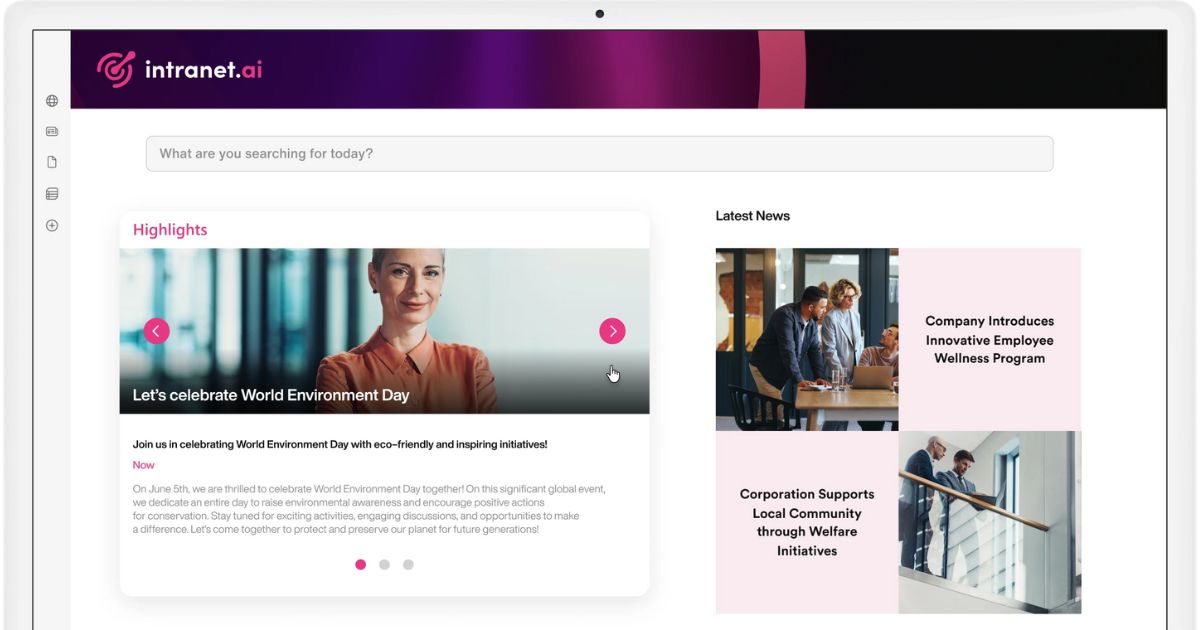
Examples of news in the SharePoint intranet of intranet.ai
2. Continue the conversation in the corporate social network
The second approach involves using the corporate social network to continue the conversation started in the intranet.
This is possible thanks to tools like Microsoft Yammer (now Viva Engage), which allow the creation of communities dedicated to onboarding and other aspects of corporate life (projects, industry topics, initiatives, etc.).
Each user can create and join a corporate community, inviting colleagues to share content, ideas, and feedback. Needless to say, thanks to the native integration between Microsoft 365 applications, conversations in the corporate social network can be displayed in the SharePoint intranet in real time.
Our recommendation is to publish an introductory post about new employees in Yammer (now Viva Engage) corporate communities as well, to complement the update shared on the intranet and bring the conversation into a dedicated channel between the corporate audience and new colleagues.
3. Organize a welcome event
The third approach involves organizing a live-streamed event to give new hires the opportunity to introduce themselves to the company and answer any questions from their colleagues.
intranet.ai has implemented this technique using Microsoft 365 live events and adopting a broadcasting style that made the event much more interactive.
We created a SharePoint intranet page for our client, designed to host the event. The page allowed the corporate audience to follow the live presentation while keeping a brief description of the new colleagues and their photos next to the player to facilitate their recognition and memorization.
Of course, a Q&A section was essential, which we enhanced by integrating the dedicated chat in the corporate Yammer community.
Corporate onboarding methods: some clarifications
It is essential to publish presentation content in a timely manner to ensure all three methods described so far are effective. It would not be appropriate, for example, to introduce someone who has already been with the company for over a month.

8 tips for an effective corporate onboarding
To support the three methods described earlier, here are some tips to better manage the onboarding process:
- Send a welcome email with access to the intranet area where new hires can find:
- first-day work agenda
- information about the office location, parking, and key contacts
- company policies (e.g., vacation, leave, support requests, etc.)
- training plan for the upcoming weeks
- Organize an office tour (also virtual) to show new hires the locations and methods for carrying out activities and meetings.
- Prepare badges and company devices in advance. Whether it's an ID card, a key fob, or a digital procedure, everything should be ready for the employee's first day.
- Arrange a meeting with an IT manager to guide the new employee in using the digital devices provided by the company. Special attention should be paid to the secure delivery of credentials needed to access various systems.
- Plan the completion of pending paperwork. In 99% of cases, on the first day of work, there are still documents to sign and bureaucratic procedures to complete. It is advisable to set aside time to review the most important documents with new hires and indicate the key contacts for any questions.
- Assign a mentor to support new colleagues in their integration into the company. The mentor does not need to oversee every detail of the new hires' activities, but it is important that each department has at least one available contact to help them navigate the organization.
- Share the training plan. New hires may need specific training to perform their tasks. The company, and in particular the department manager, should assess the new employee’s training needs as early as the selection phase. This allows them to define in detail the training scope and schedule for the first months of work, helping the new hire develop the necessary skills to perform their tasks effectively.
- Create informal moments with the team. This is almost a must: a coffee break, a team lunch, or a simple welcome toast at the office can make the difference between a purely formal onboarding process and a heartfelt welcome into the corporate community. Even if it may seem forced, it is the best way to lay the foundations for a stronger and more transparent relationship.
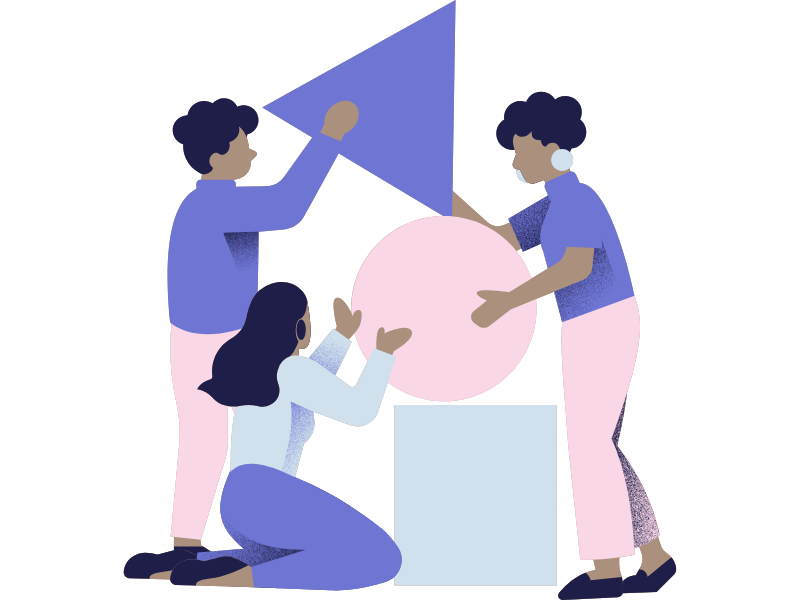
Checklist for corporate onboarding: steps to follow
To conclude, we have created a checklist that summarizes the key activities and strategies to implement to ensure a proper welcome for new colleagues.
Before the 1st day
Even before new colleagues officially join the company, there are some key aspects to consider right after completing the candidate selection process.
At intranet.ai, we provide HR teams with a form where those responsible for recruitment can enter all relevant information about the selected candidates.
This is not just about personal details but, more importantly, about information regarding the role and the tasks that the new hire is expected to handle. This includes defining their manager, the department they will work in, and the facilities they will need to perform their job effectively, from a computer to access to specific software or a particular site.
Once this form is completed, even through the corporate intranet, the first series of activities in our checklist can begin. Here are some examples:
- sending a summary email to the relevant people, such as the department head;
- sending an email to new hires with access links to the intranet’s onboarding area.
In this space, new employees can:
- upload the required documents to sign the contract
- access and confirm the reading of corporate policies
Information about the company itself can also be included. For example, a video explaining the organization's history, mission, and recent achievements.
Of course, before their 1st day, new colleagues will not have access to all intranet pages. However, by granting access to the onboarding area, the company allows them to familiarize themselves with a tool that will be part of their daily work life.
1st day at the company
The first day at work has arrived. In this second phase, HR teams can choose the most appropriate welcome approach, ensuring the onboarding experience is well-structured.
A presentation of the management team and the direct supervisor is essential, as the latter might also act as a mentor for the new hire.
From a digital perspective, the first step can be sharing a welcome message on the intranet that allows employees to:
- access the list of tasks to complete in the first few days
- find links to the most useful resources and tools
The message can also include links to:
- key contacts
- company organizational chart
- latest news and relevant updates
- meetings to get to know colleagues and introduce themselves
- meetings with mentors and team members to align on goals

First week at work
The onboarding process does not end on the first day—it has just begun. This is why it is essential to define the activities that new hires will need to carry out during their first weeks in the company.
Another key aspect: during the first week, it is important to start collecting feedback from new colleagues.
Once again, the corporate intranet proves to be a valuable tool, offering the possibility to publish and distribute customized forms for each group of stakeholders involved in the onboarding process. Feedback collection is not just for new colleagues; the forms can also be used, for example, to measure the team's sentiment towards the newly onboarded resource.
First months at work
We are approaching the final stage of the onboarding process. If managed correctly, new employees should now be able to:
- carry out their tasks independently
- collaborate proactively with colleagues
- use tools such as the corporate intranet
How can we further engage new hires at this stage?
One idea is to assign new goals (while keeping them realistic) that allow new colleagues to feel recognized as valuable resources for the organization's growth. These goals should not be imposed but should leave room for ideas, perhaps fresher and more innovative, from the new hires.
Do you want a complete, ready-to-use intranet?
intranet.ai is the SharePoint Online-based solution for simplifying internal communication and digitizing business processes with minimal investment of time and money.
- 50+ features for communication and employee experience
- Branded design, customizable in every detail
- Full integration with Microsoft 365 and Viva
Giuseppe Marchi
Microsoft MVP for SharePoint and Microsoft 365 since 2010.
Giuseppe is the founder of intranet.ai and one of the top experts in Italy for all things Microsoft 365. For years, he has been helping companies build their digital workspace on Microsoft's cloud, curating the people experience.
He organizes monthly online events to update customers on what's new in Microsoft 365 and help them get the most out of their digital workplace.
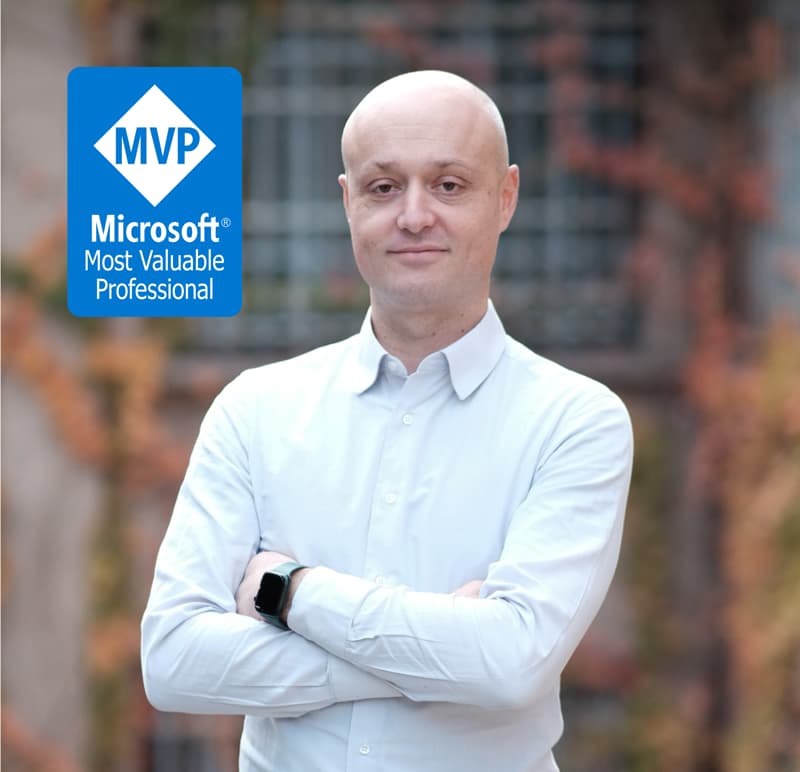
FAQ about corporate onboarding
What is corporate onboarding?
Corporate onboarding is the process of integrating new employees, providing them with the tools and skills for their role, and facilitating their transition into the company.
Why is corporate onboarding important?
A well-structured corporate onboarding increases employee productivity and retention, reducing turnover and improving engagement.
What are the benefits of the intranet for corporate onboarding?
The intranet centralizes company resources, making it easier to access the information and tools needed for a fast and effective integration.
What are the best examples of corporate onboarding?
The best examples include welcome messages from colleagues, company tours, and digital platforms for training and socialization.
How long should corporate onboarding last?
The process can last up to 12 months, depending on the role and the complexity of the company.
Keep on reading
Employee Engagement: Tools and Examples to Implement It



Employee engagement is the emotional bond between people and companies. Here’s how to strengthen it with the best tool: the SharePoint intranet.
SharePoint Document Management System: How and Why to Use It?

Here’s how to create a document management system with SharePoint Online, leveraging its features, document libraries, and available integrations.
Corporate training: How to manage it with Microsoft 365



From planning to tracking results, let's explore the techniques and tools to enhance the corporate training experience.
